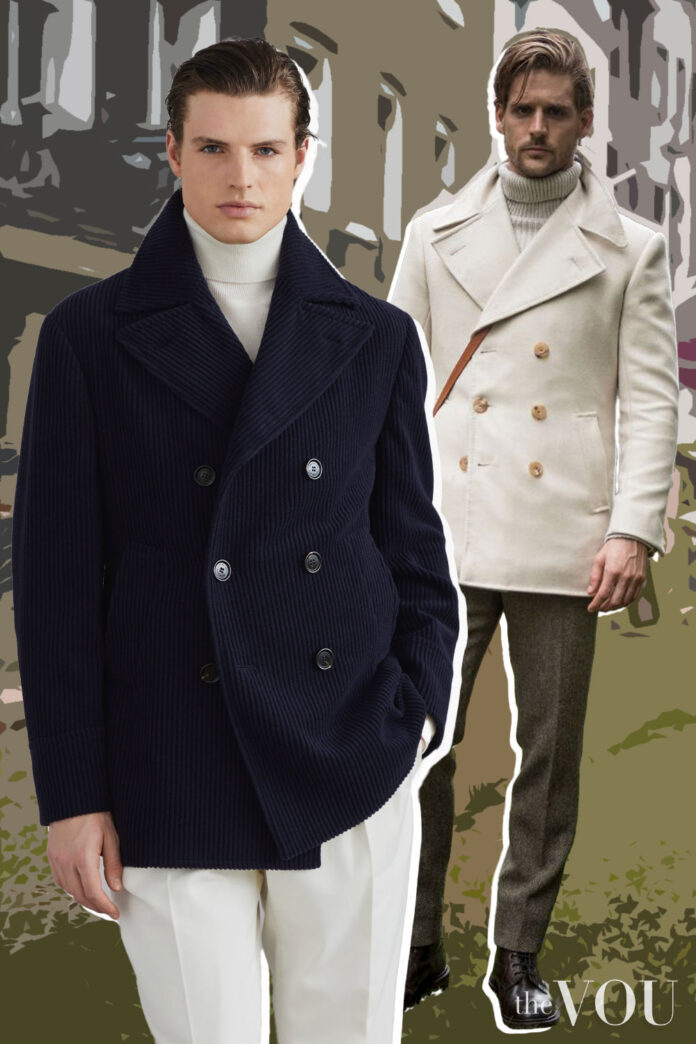With a heritage in the British Royal Navy and the US Navy, the peacoat is a classic style overcoat and an iconic military garment that has influenced Classic menswear.
In this article, we’ll teach you how to choose and style this classic garment, including the best fabric, buttoning rules, and how to find the right silhouette.
We will also examine how peacoats are styled in contemporary menswear and provide tips on how to create unique outfits that scream silent luxury and old money.
Correct Peacoat for a Classic Style
Peacoats differ from all other types of wool coats, so it is important to understand what makes them unique.
While there are many other variations of men’s pea coats, our breakdown will focus on the naval peacoat and its timeless old-money design.
Peacoat Silhouette
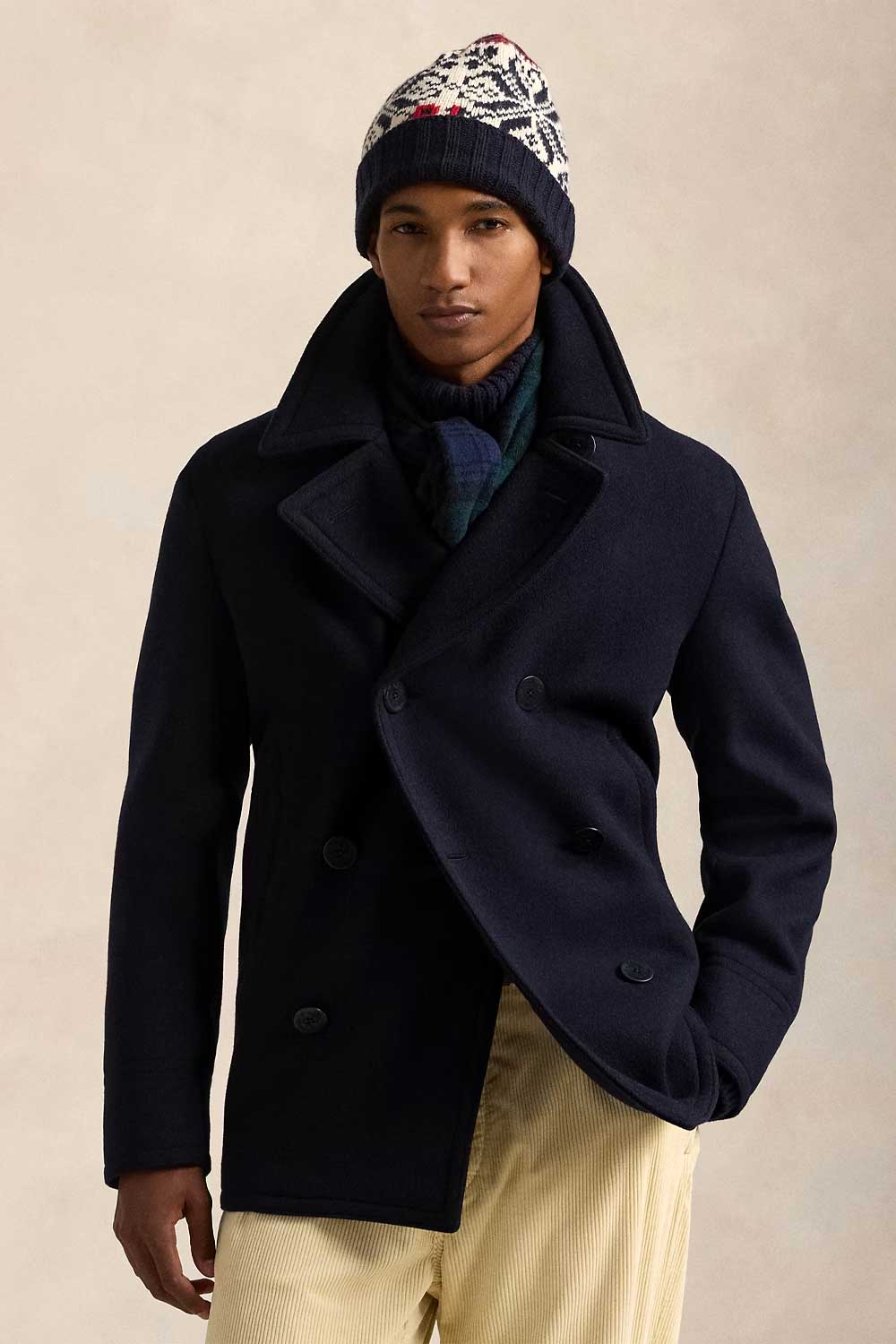
Modern peacoats have a specific cut that reflects their functional origins.
The peacoat is a simple jacket with a straight cut down the body and a length slightly longer than a regular jacket – yet shorter than an overcoat.
Peacoat Details
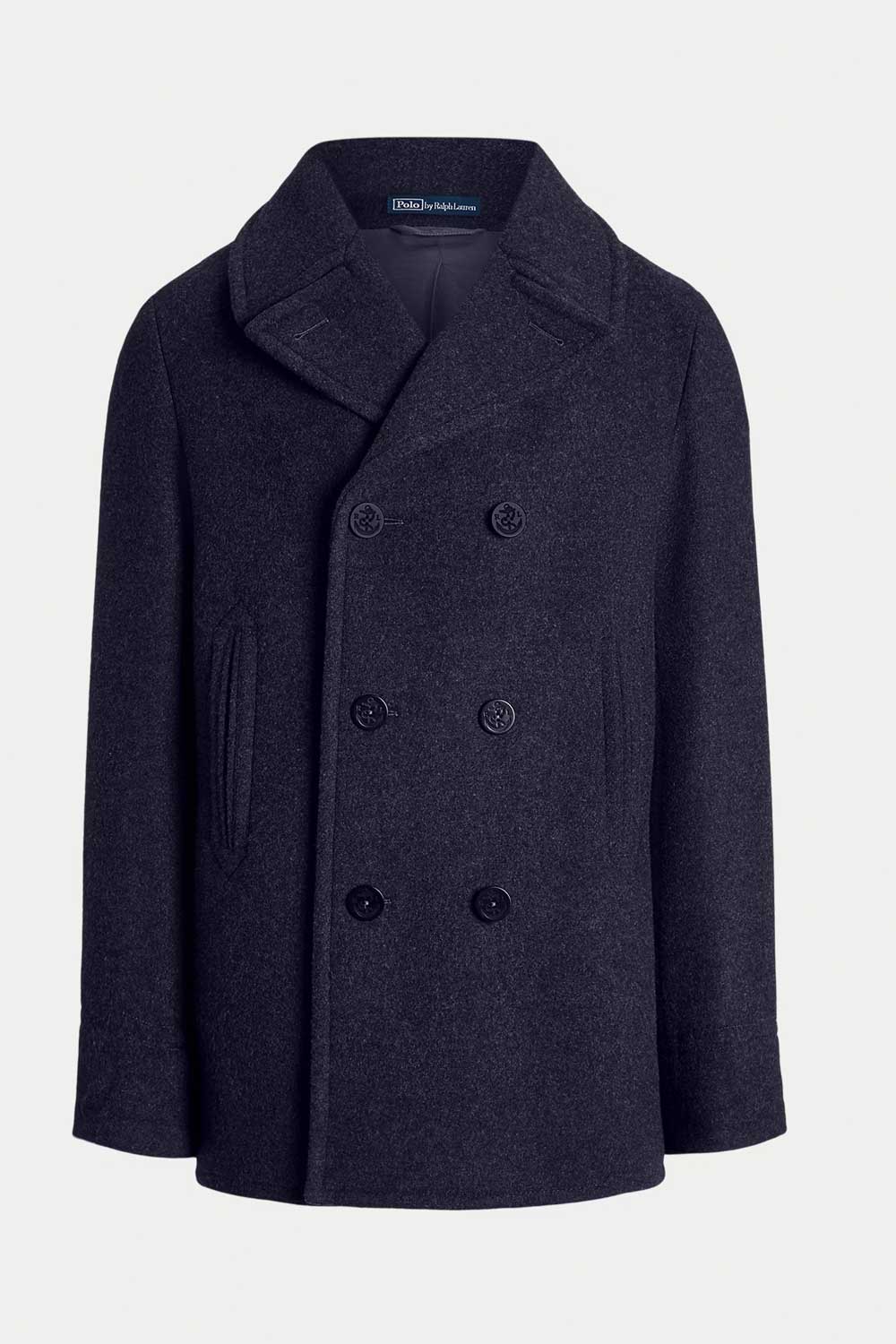
Early peacoats had short or no side vents, whereas current US Navy peacoats feature a centre vent.
The vertical slit pockets were designed for easy access, featuring a little change pocket on the inside – that’s because classic US Navy pants did not have pockets.
On the inside, you will find two pockets on either side to store your everyday carry items.
Peacoat Pockets
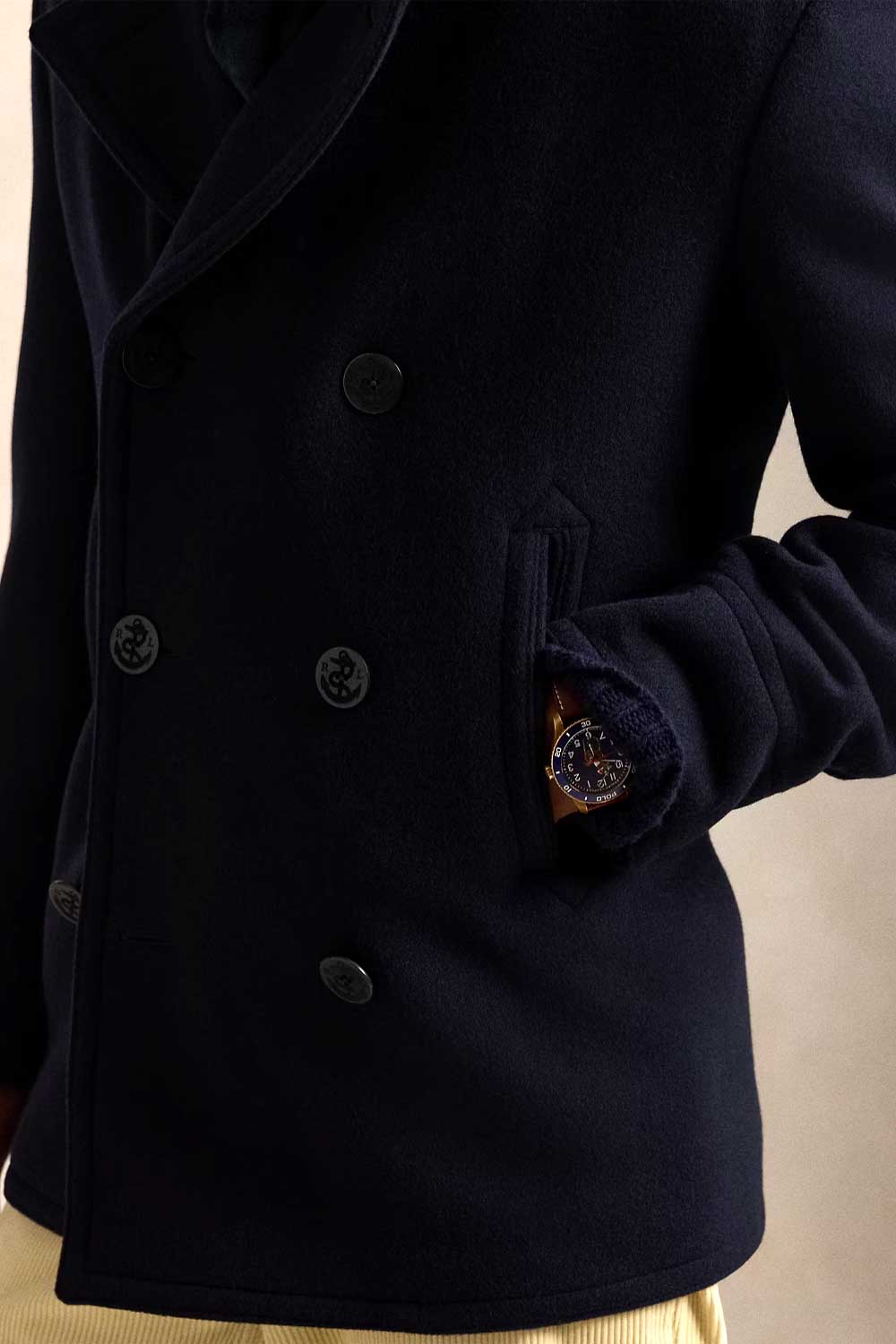
Most peacoats feature voluminous, welted pockets, which serve both as a safe haven to protect hands from the elements and as a location for storing extra items.
The pronounced slant typical of these pockets ensures that whatever is placed inside will not fall out.
Peacoat Fabric
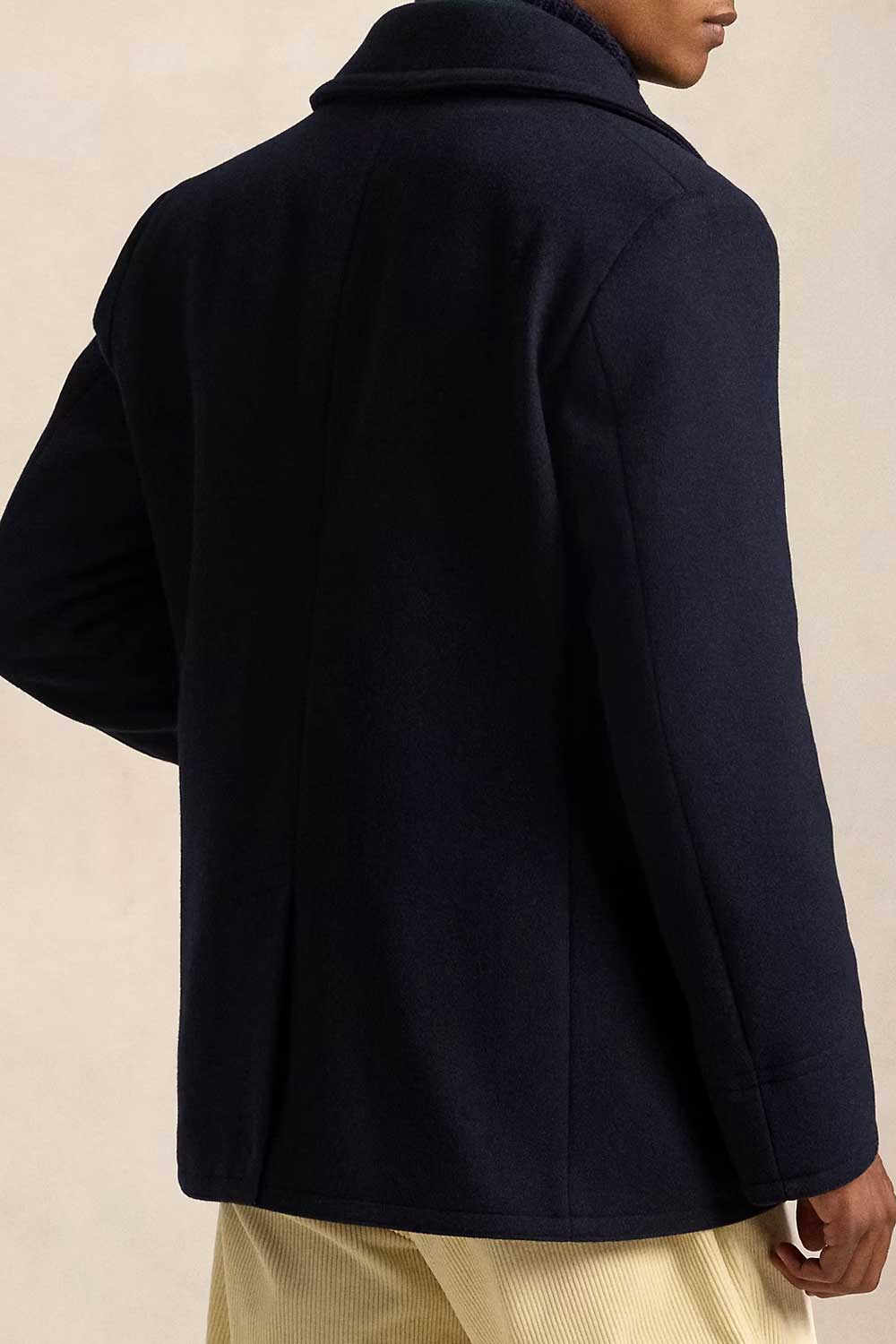
Modern US Navy peacoats are made of midnight blue 24 oz / 750 grams Melton wool, 80% wool, and 20% artificial fibres.
Traditionally, the peacoat was made of 100% Kersey wool, just like the Melton for the British Warm.
The pilot fabric was an option, and later, 100% wool Melton or Kersey was used in weights up to 34 oz./1050 grams per yard/meter.
Today, you can still find 100% wool melton fabrics, but usually not heavier than 24 oz, which is a shame because the heavier fabrics provide greater warmth.
If you can, get a heavy-weight vintage-style coat, though good examples in decent shape are few and far between.
If you opt for a modern version, skip the nylon and polyester blends and invest more in quality fibres.
While you can find peacoats in different materials, such as canvas, cotton, cotton blend, or nylon, technically, these are not peacoats.
Peacoat Collar
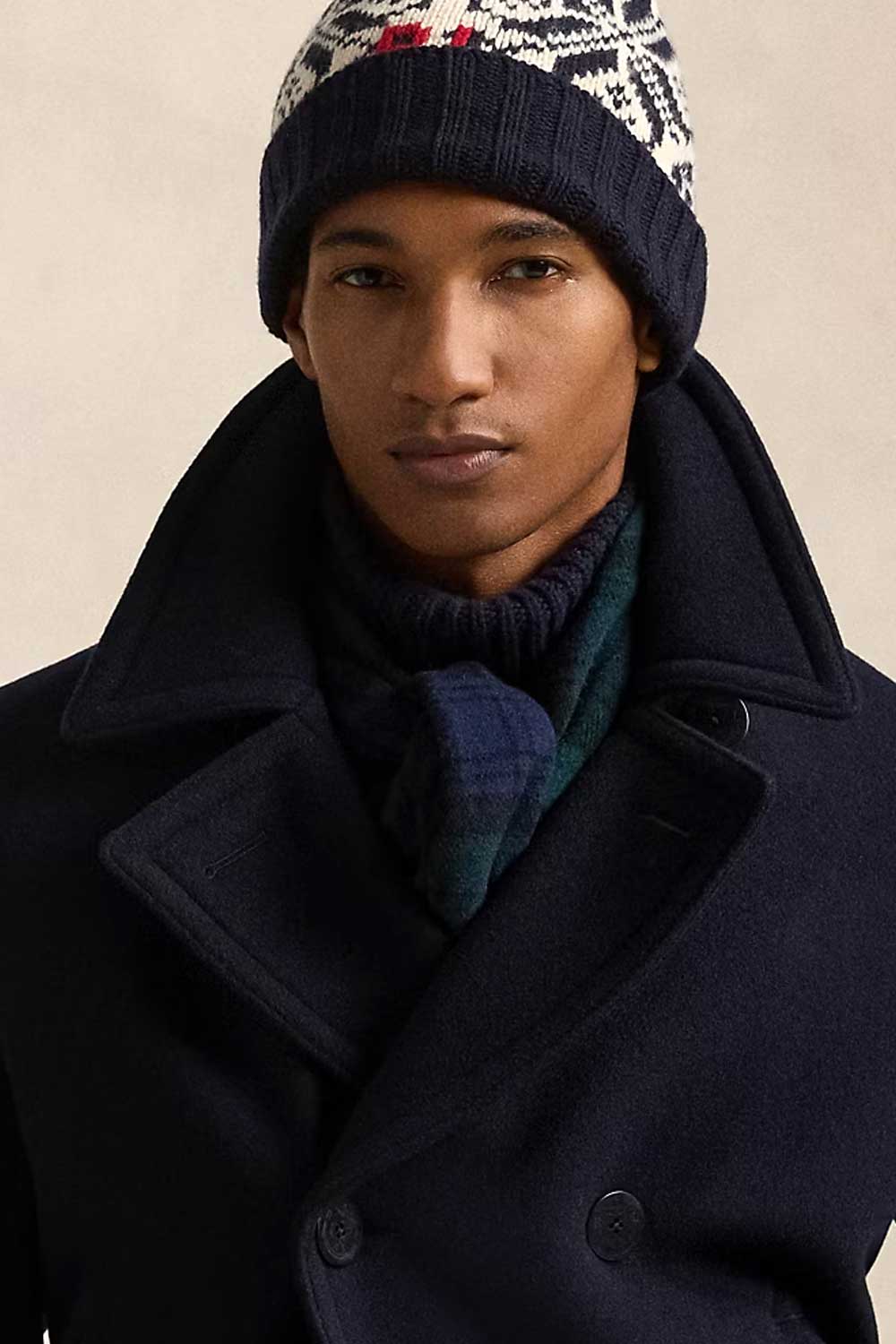
An oversized wide collar, typical of an Ulster coat, allows the wearer to button up the collar around the face for extra protection from the elements, using the 7th button (and occasionally the cordage, depending on the brand).
Seafarers wore several layers underneath so were unable to button that 7th button and instead used cordage.
As such, the remaining 6 buttons are arranged traditionally on the double-breasted silhouette.
Peacoat Buttons
Throughout history, peacoats had a varying number of front buttons, both oversized buttons and conventionally sized.
During WWI, they often had 10 buttons, later 8, and now mostly 6 with one hidden button under the right collar.
In the US Navy, these buttons are traditionally black.
Every once in a while, you will also see gold brass buttons on a midnight blue peacoat.
Traditionally, officers, warrant officers, or chief petty officers could upgrade their peacoats with these buttons.
US Navy Peacoat Button Designs
In the early 20th century, peacoat buttons featured a large fouled anchor in the centre surrounded by a ring of 13 stars spaced along the edge of the button face.
At that time, the coat was longer and had two additional horizontal pockets.
By the 1920s, peacoats had the buttons that are used today, but in the 1970s, Admiral Elmo Zumwalt had these buttons replaced with 40-ligne (1″) metal buttons that looked identical to the gold ones worn by officers, with the exception that they were pewter coloured.
The “Zumwalt” buttons featured an anchor but only as a perch for a large eagle; they also featured a small stack of cannonballs.

In 1984, the Zumwalt buttons disappeared again, and “traditional” fouled anchor buttons returned.
Today, US Navy peacoats feature large (35-ligne) thick black plastic buttons.
The front is imprinted with a “fouled anchor” design, which refers to the traditional image of an anchor wrapped in a rope.
In nautical terms, something “fouled” is wrapped up or tangled with ropes.

According to tradition, this emblem dates back to the personal seal of Lord Howard of Effingham, the Lord High Admiral of England, when the British defeated the Spanish Armada in 1588.
Following the victory, the design was adopted as the official seal of the Lord High Admiral of Great Britain.
While many navies use variants of the peacoat, and most use buttons with some variant of the fouled anchor design (with a crown, if the country is a kingdom), it is also true that many of these buttons are of brass, gold-plated or not; or of anodised aluminium, also known as “stabrite.”
Sometimes, the buttons are made of black plastic or horn, but with metal shanks rather than four sewing holes.
Some will argue that an authentic US Navy peacoat must have black anchor plastic buttons, but you should remember that you can wear whatever you want as a civilian.
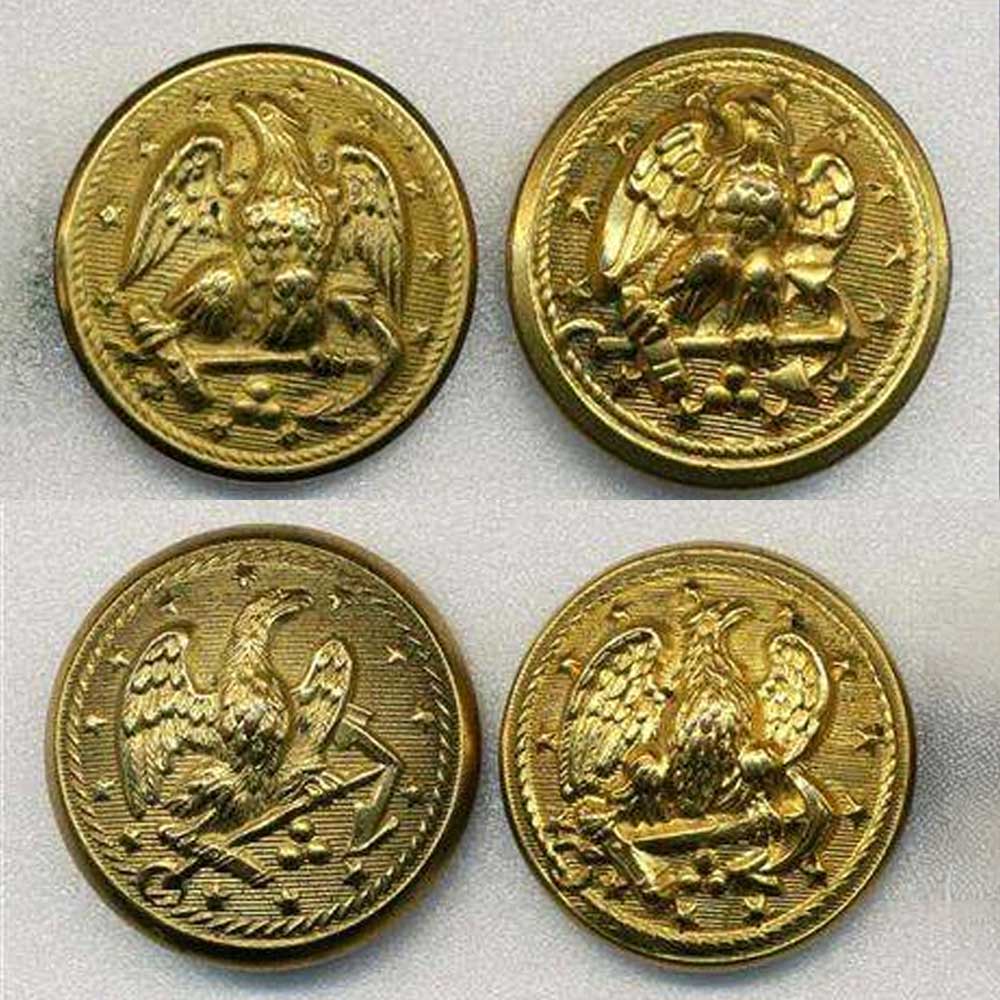
For example, a peacoat looks great with gold, pewter, horn, or mother-of-pearl buttons.
Adding a bit of contrast to an otherwise very simple jacket is nice.
Peacoat’s Perfect Size
Peacoats are fitted but not so tight that the vent gaps or you have wrinkles when buttoning the coat.
To find the right size, you must determine how you like the fit of your peacoat and physically measure your chest with a measuring tape.
For example, if your chest is 44 inches, wear a 42L peacoat, which measures 45 inches in the chest.
Also, if you’re around 6 feet tall and have long arms, opt for the longer version rather than the regular model to have enough space to wear a thick sweater underneath it.
In case you want to wear less, you should size down by more than two inches and if you like it roomier, size up.
Peacoat Styling Guide
The American navy peacoat is “a double-breasted, hip-length coat made of dark blue authorised fabric with a convertible collar, a set-in pocket in each forefront, and a single row of four 35-line plack plastic anchor buttons down the right front and three on the left.
The buttoning rule is important here. In most cases, you should button all buttons except the collar button, which may be buttoned in inclement weather.

When the arms hang naturally at the sides, wear the jumper collar inside the coat. Sleeves should reach about three-quarters of the distance from the wrist to the knuckles.
Pea coats were designed as protective outer layers, so you should never layer anything else over one.
That being said, you can, of course, wear other accessories like scarves during the winter. Just make sure you are layering the scarf tied in a knot underneath the pea coat.
Wear it loose to avoid making the neckline look bulky—let the pea coat’s collar be the star.
You can show it off by unbuttoning your pea coat, and if you are freezing, you can turn the collar up.
Though the design of the pea coat has changed, the styling rules have remained the same over the years.
The length of the jacket should hit the bottom of the hips to define your torso.
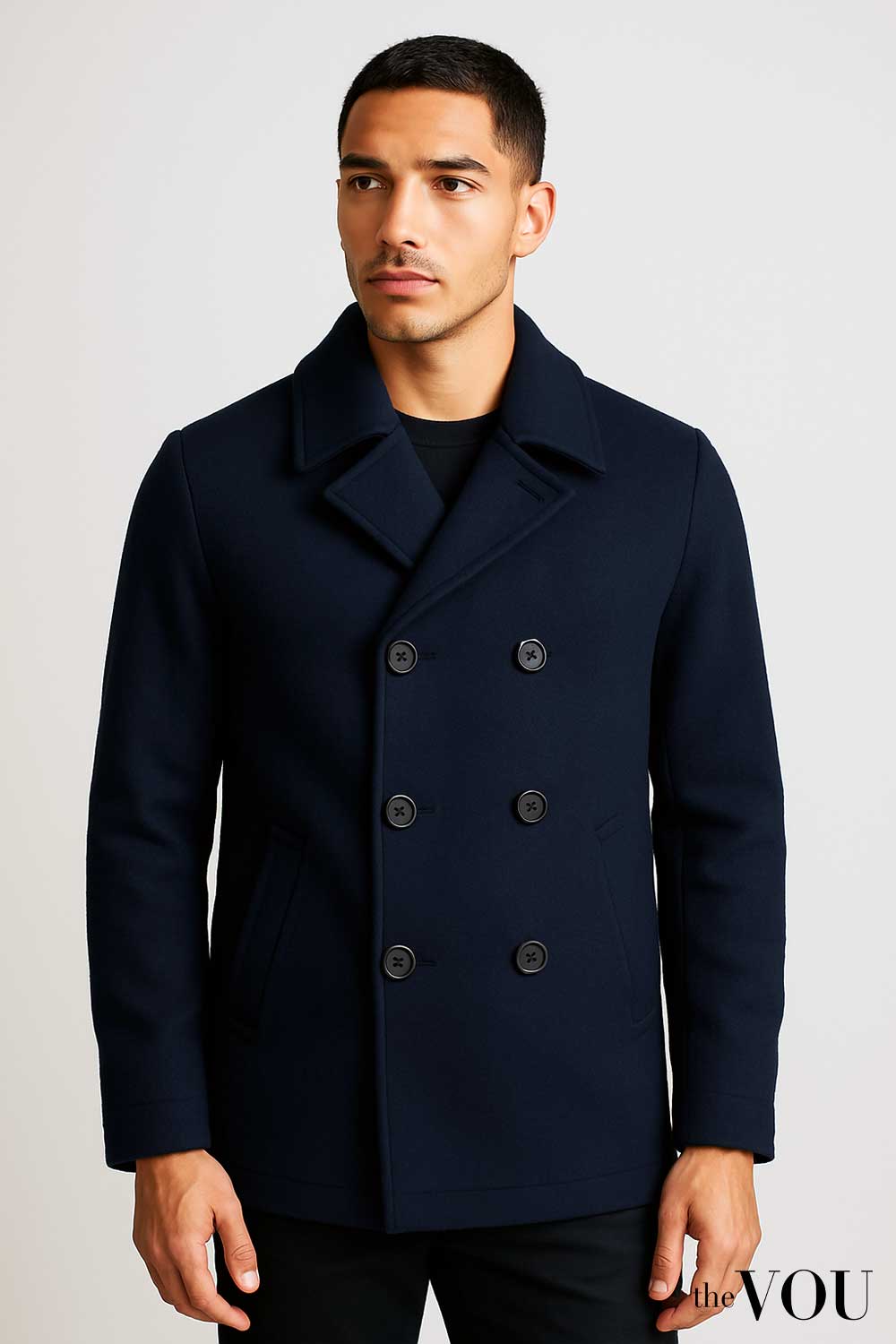
Avoid wearing a pea coat that’s too long or short, as the fit won’t look right.
A pea coat that’s too long will make you lose your shape, and a pea coat that’s too short will make you look rounder than you are.
Also, ensure the sleeves extend to the top of your hands when standing up. You don’t want any long-sleeved underlayers to be able to poke out from underneath.
The pea coat should be well-fitted but not too tight – you should be able to move your arms comfortably.
Keep the buttons closed to recreate the original, iconic pea coat look.
It works for any season that requires a jacket: fall, winter, and maybe even the first few months of spring if you live somewhere with a cooler climate.
You can wear them on the weekend over casual pieces like jeans, chinos, sweaters, open-buttoned shirts, or even a t-shirt in the fall.

You can wear boots or even sneakers on your feet with outfits like these.
If the weather is a bit cooler, you can accessorise with a beanie or layer a sweater over your shirt for warmth and interest.
If you have a formal dress code at work, pea coats also make an excellent outer layer.
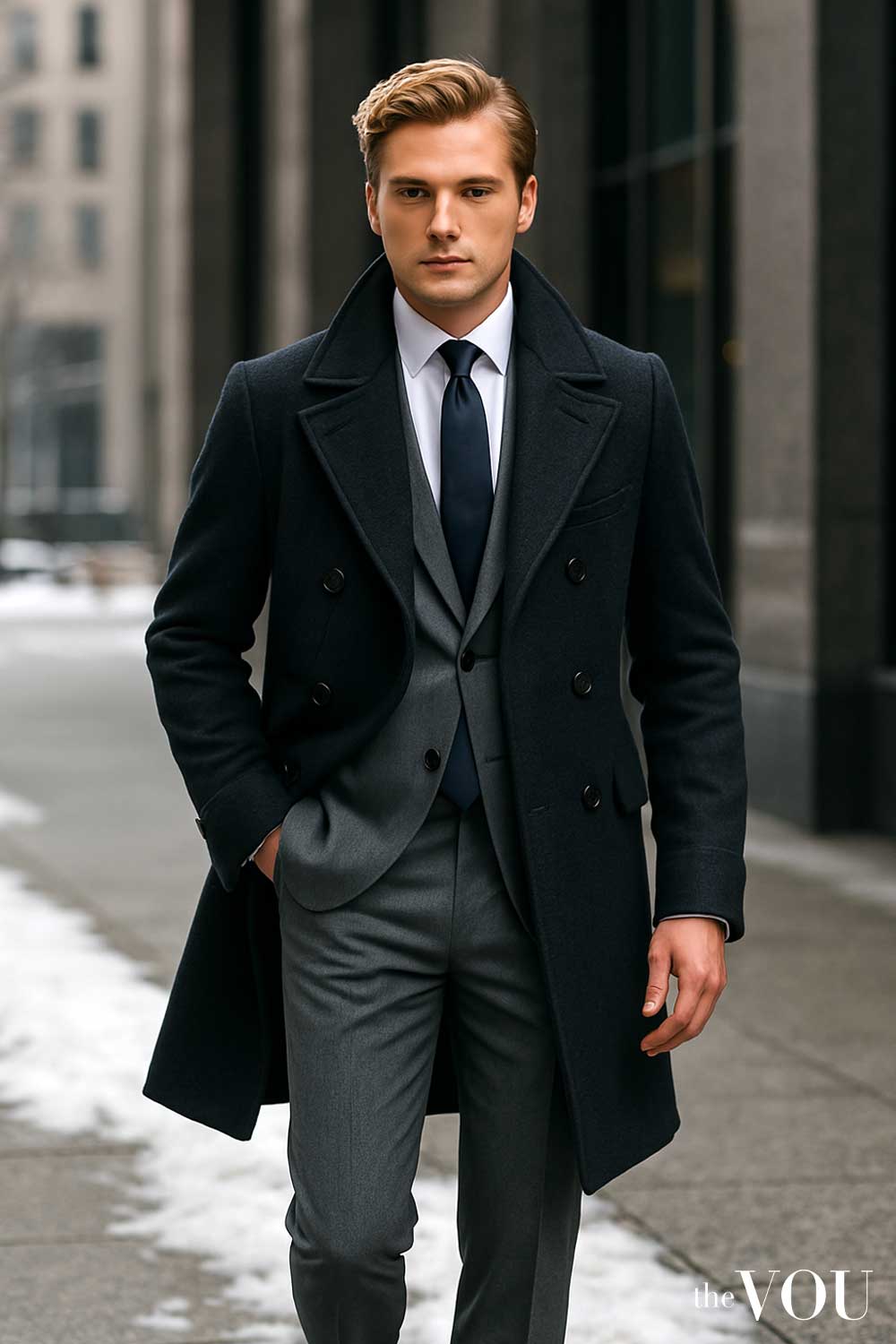
Pea coats look great styled over single-breasted suits, shirts, and slacks if it’s a bit warmer.
Layer a turtleneck sweater and slacks underneath a pea coat for a smart and stylish outfit.
You can wear dress shoes or boots; most styles will look great with the pea coat.
You can apply the layered sweater and shirt combination, only with slacks and a tie instead.
For extra style points, you can pop the collar; it will warm your neck and give your look a sartorial touch of a Preppy vibe.
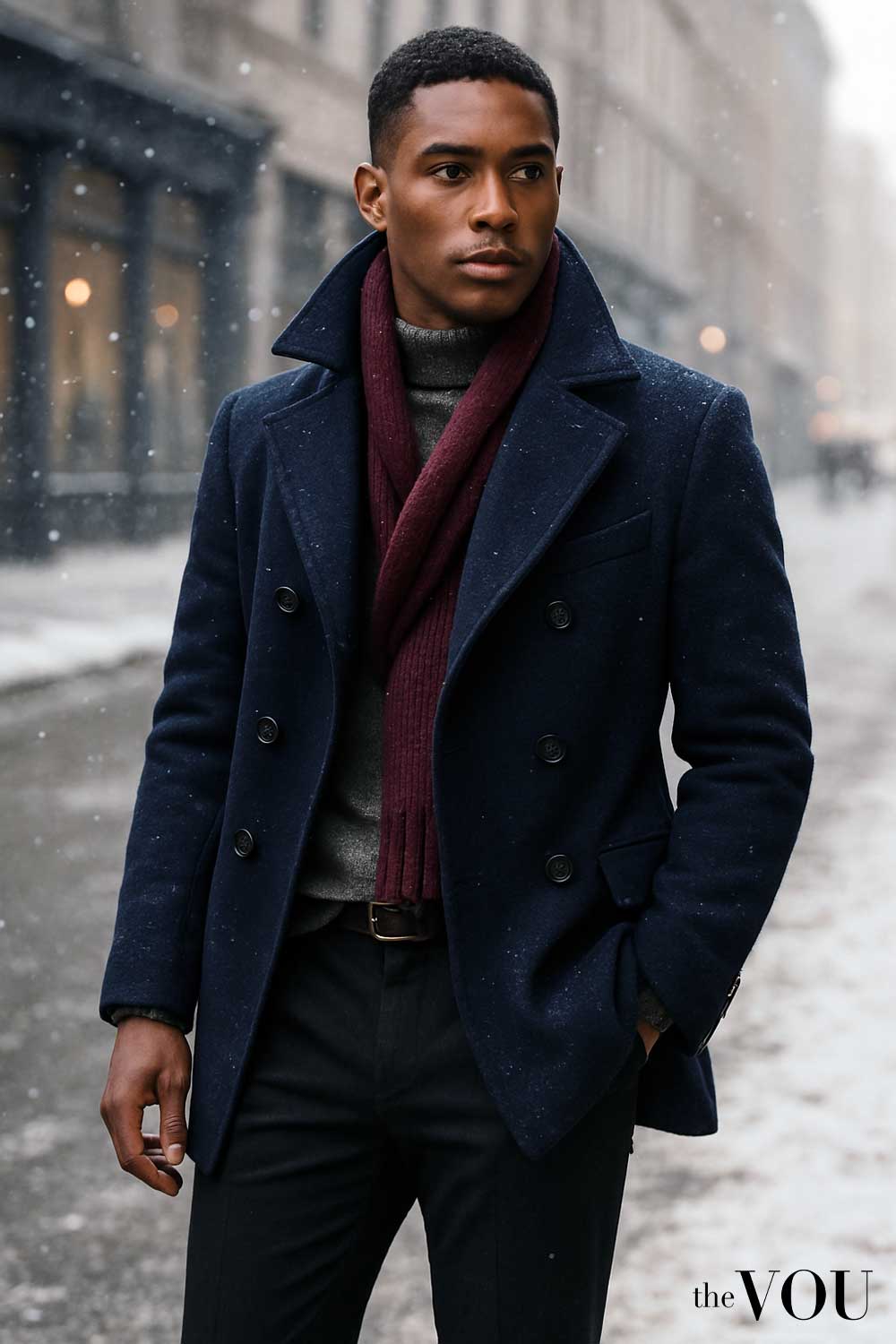
However, save this trick for the winter, as you might look out of place in the fall.
As we know, pea coats are now available in many different colours and variations.
If you prefer a more traditional feel, choose a navy version in the classic coarse wool.
However, if this is not your style, choose what feels best for you.
Pea coats now come in almost any colour, so if you prefer lighter or brighter styles, go for it; you might even enjoy lighter and more luxurious fabrics.
If that’s the case, find a lightweight merino wool or cashmere version – you can add details like belts, buttons, patches, and taping.
It’s easy to get the pea coat of your dreams when it’s made to measure.
Not only will it fit you perfectly, but you can add all your favourite details exactly as you like them.
Remember, the pea coat should be the outset layer of your outfit; the only pieces that should ever be over a pea coat are carefully selected accessories.
However, the ultimate way to wear this coat is to keep all layers and garments (including scarves) underneath it.
If you wish to follow the proper pea coat style rules, look at the jacket above. The buttons should be closed to have the original, iconic look, and the jacket’s length should be “hit” at the bottom of the hips.
Don’t wear a pea coat that’s too long, as it will lose the sense of figure-shaping/defining.
Also, avoid wearing pea coats that are too short, as these will make you look “rounder” than you are.
Peacoat History
Unlike the more defined history of the Trench Coat, the origins of the peacoat are more ambiguous.
European and American sailors have worn a version of the jacket for nearly three centuries, so it’s probably not surprising that several different versions of the peacoat story exist.
Let’s look at them one by one. Like many garments, the history of the peacoat may not be exact, but it has left an indelible impression on classic fashion.
The Dutch Peacoat

The Oxford Dictionary dates the origin of the term pea jacket or peacoat to the early 18th century, claiming that it was most likely derived from the Dutch word pijjakker, from “pij” for ‘coat of coarse cloth’ + jekker for ‘jacket’.
Since the Dutch were a naval power for many centuries, and the peacoat is commonly associated with seafaring, it does not seem far-fetched that the jacket was, in fact, from the Netherlands.
The Camplin Peacoat
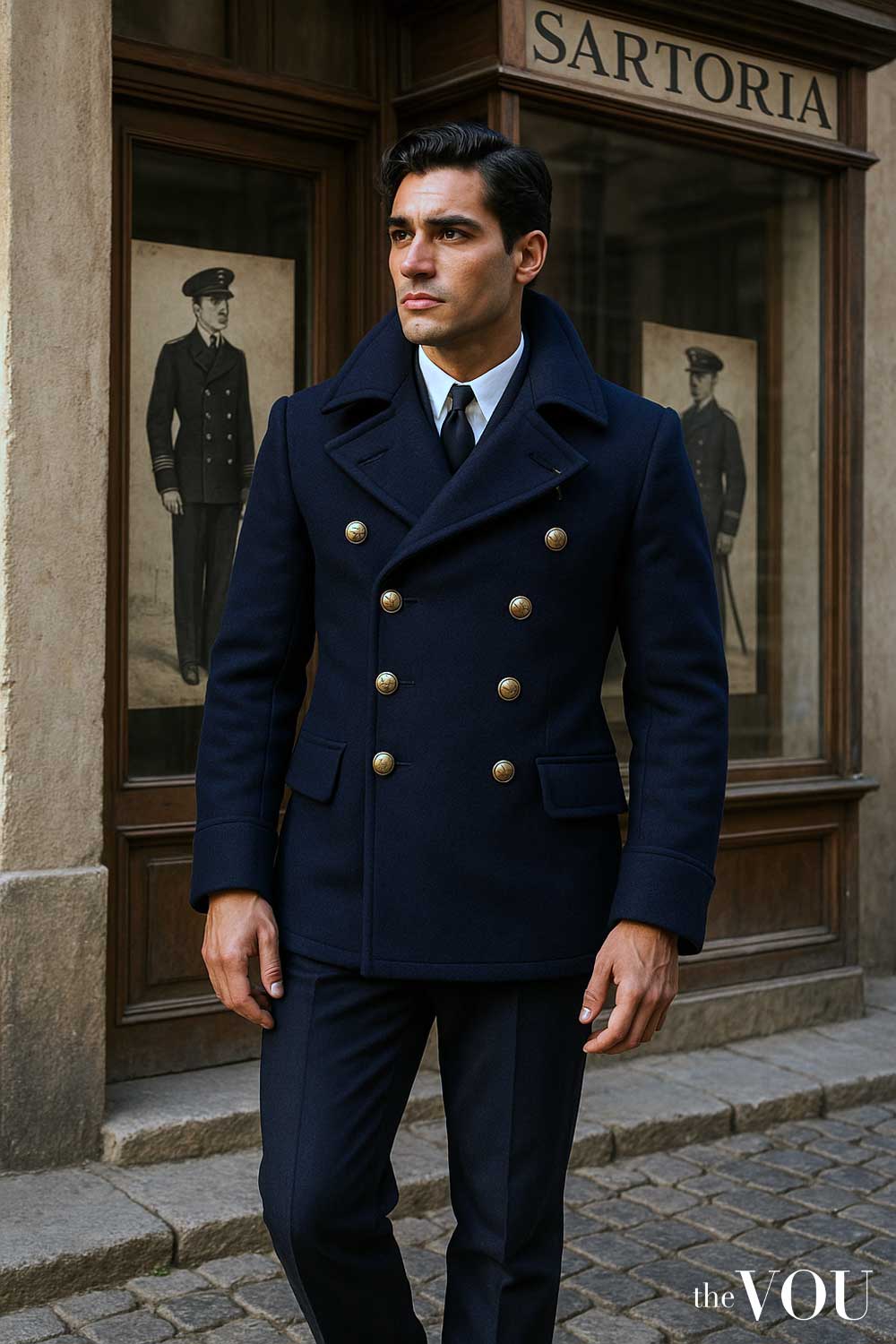
According to Camplin, a heritage British clothing brand based in Italy, Mr. Edgard Camplin founded a store in 1850 where he sold uniforms to the British Royal Navy.
The article sold particularly well in India, starting in 1888. After that, Mr. Camplin supposedly suggested – at an unknown date – creating a coat for the uniform of petty officers, who had the same uniform as sailors up until then.
Instead of the officer’s coat, Camplin designed the Petty coat, also known as a P. Coat. The name was eventually popularised as Peacoat for phonetic reasons.
This version of the story may be true, but it does not name any sources or dates other than the company’s records; the company still sells peacoats based on the story that Mr. Edgard Camplin “invented” the peacoat.
Tailor & Cutter Peacoat
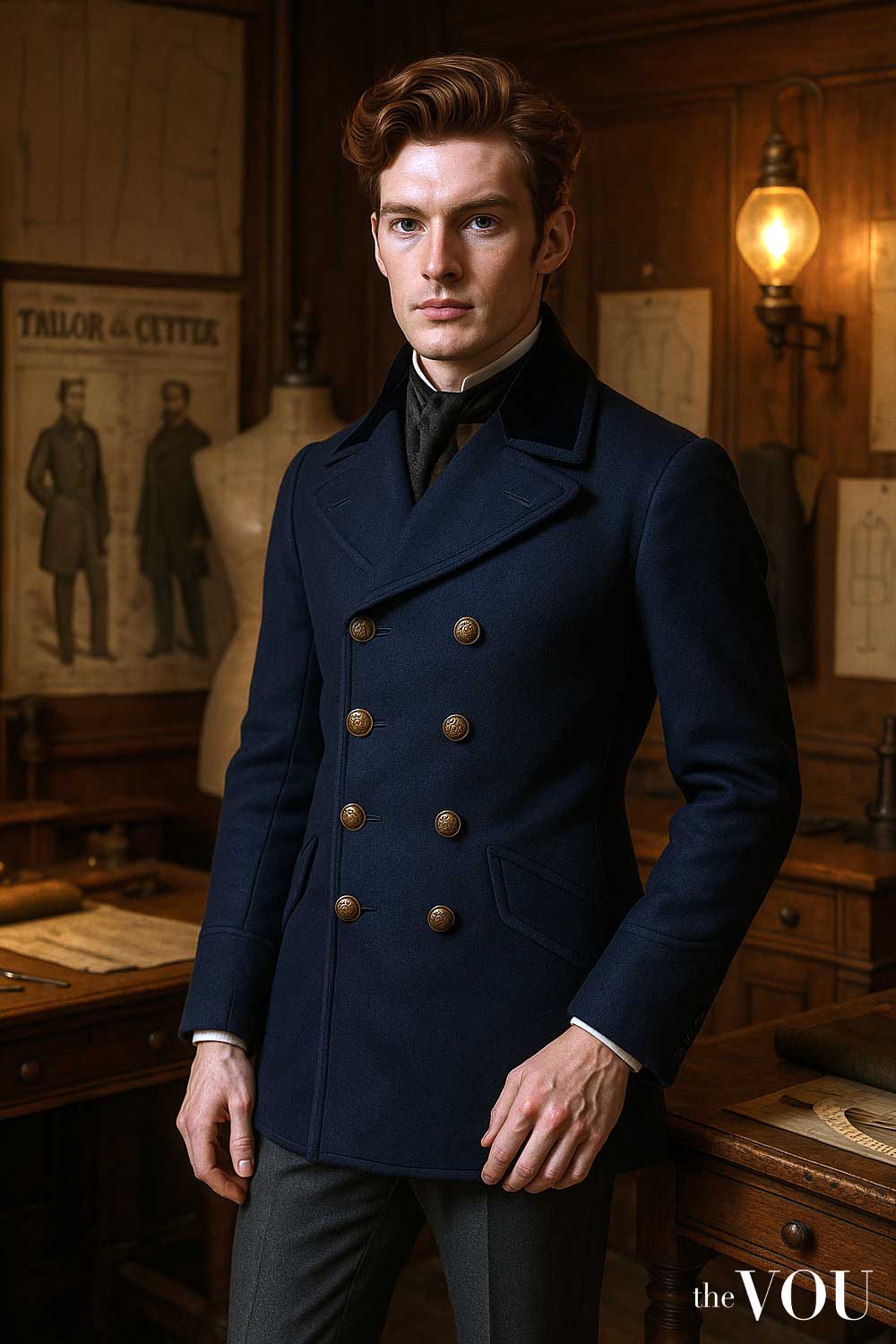
The Tailor & Cutter was England’s leading tailor trade magazine in the 19th century.
It was published weekly and focused on tailoring and cutting, as well as fashion trends and etiquette.
For example, if people began wearing new styles, Tailor & Cutter would comment on the clothing, which was particularly true for anything a Royal wore.
In an issue from October 1868, they report about the so-called “Prince of Wales Jacket” emerged, which characterised it as a loose double-breasted jacket with three pairs of buttons, two cross pockets, and wide piping.
The coat was made of blue pilot cloth lined with wool when intended for rough use.
It was made of blue witney or another soft material with silk-faced lapels and a velvet collar for town wear.
It was tailored with or without a back seam and with short vents at the bottom.
The illustration is from 1869 and describes it as a “Prince of Wales pea-jacket”.
Chances are, the PoW was not the inventor, but rather, he was the person who popularised it.
Peacoats During the World Wars
Peacoats became an iconic emblem of the seamen of the United States Navy during both World Wars.
However, many navies adopted the peacoat, which was sometimes even worn by forces fighting on the land.
Durable and insulating, the peacoat was essential for sailors in peace and wartime.
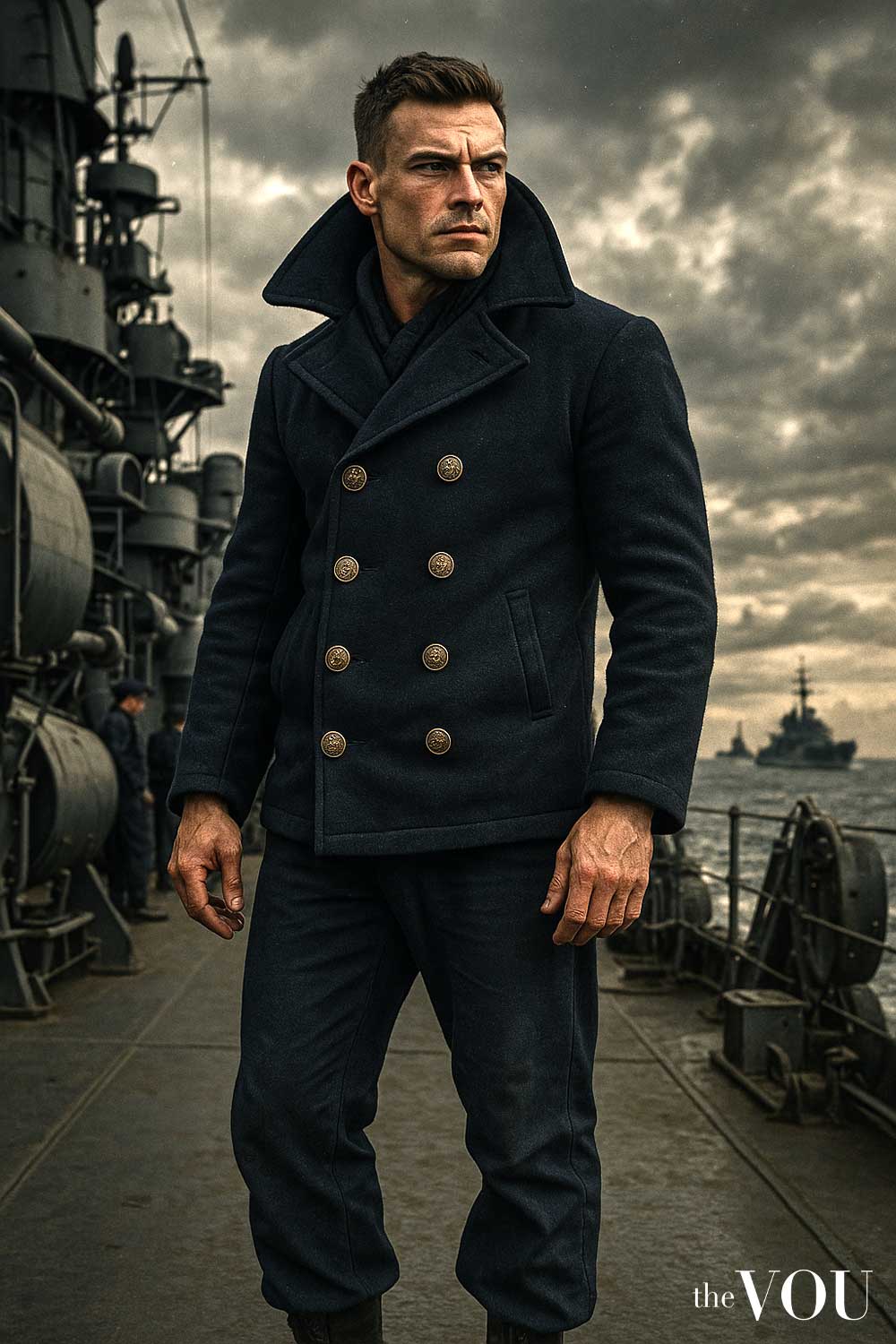
Inspired by the fighting spirit of these sailors, the peacoat became an increasingly popular postwar garment for civilians, especially after World War II.
In this regard, the peacoat is similar to the trench coat, which enjoyed popularity after World War I, and the bomber jacket, which proliferated, like the peacoat, after World War II.
In 2018, the United States Navy high command replaced the traditional peacoat with a synthetic-material black parka.
This decision was made to update the image of the modern American sailor and from a “desire to reduce current Navy sea bag uniform component requirements and reduce the cost to the Navy’s annual uniform budget,” according to USNI News.
Peacoat as Fashion Icon
Throughout the second half of the 20th century, the peacoat became increasingly common as a casual coat for stylish men.
Hardwearing, insulating, and masculine, the peacoat had a romantic flair and a rakish charm that made it extremely popular.
Eventually, the garment was so popular that even ladies began to wear lighter variations of the peacoat.
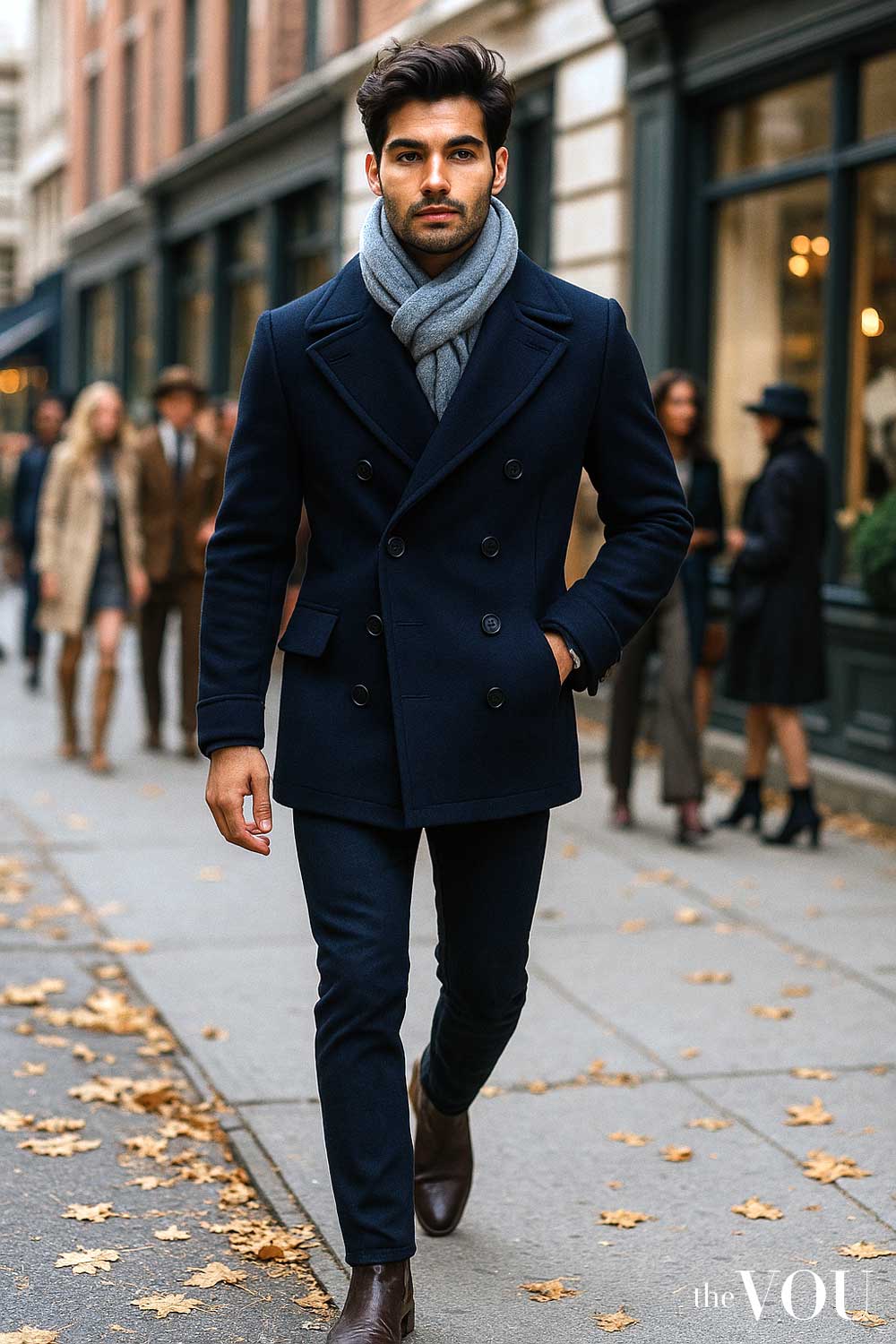
Genuine Peacoat Stores
Unfortunately, the US Navy stopped issuing peacoats in May 2019, so new-old stock is the only option if you want an unworn US Navy-issued peacoat.
Some clothing companies still offer peacoats, but most have added unique design elements.
If you are not concerned about strict authenticity, the peacoat from Camplin (now Italian-owned) may be the right choice.
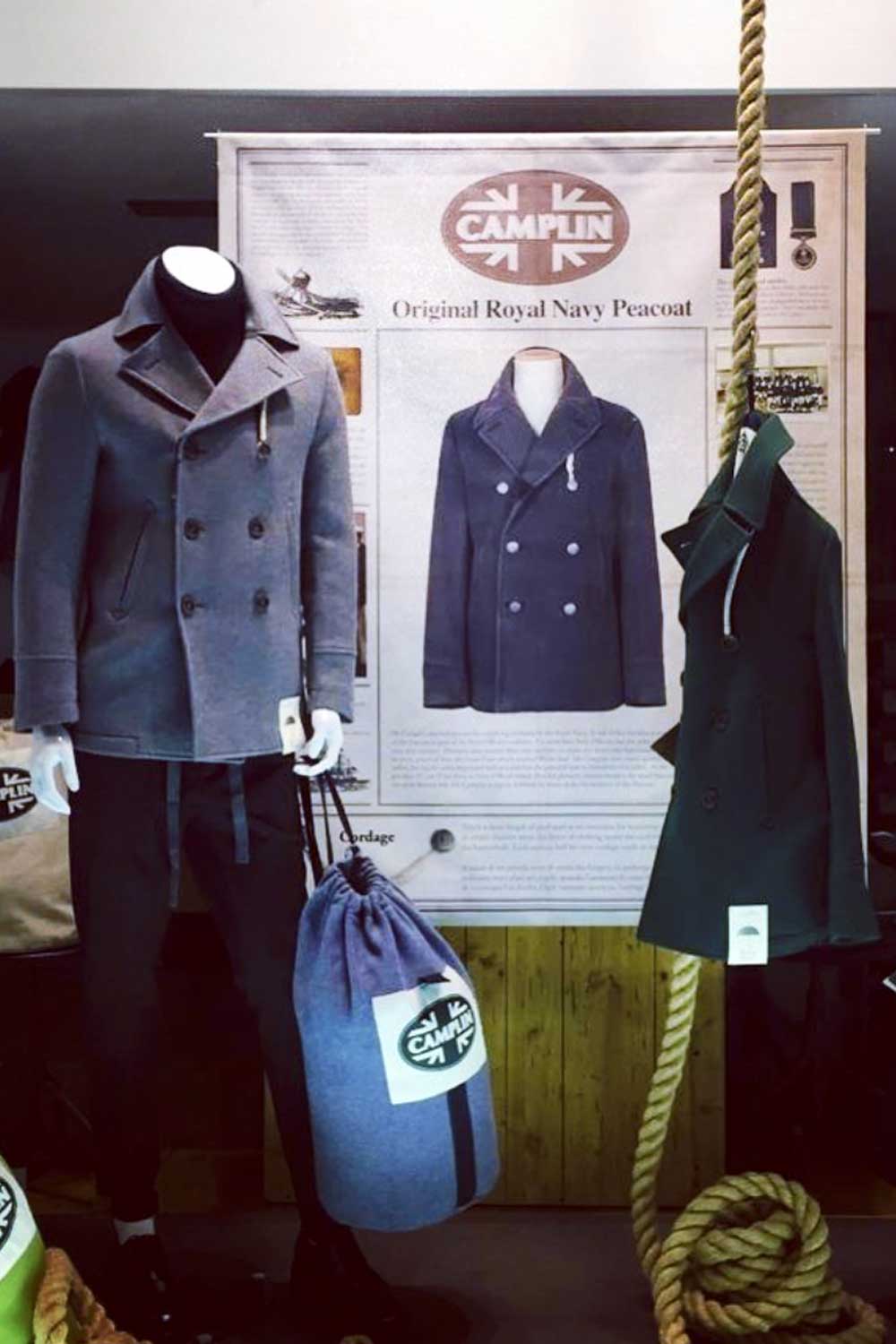
They come in various colours, but they also cost two and a half times as much as the US-made ones.
Army-Navy surplus stores are likely to have models in modern wool-synthetic blends; online surplus stores also carry a variety of peacoats.
While these are very affordable and come in thick 32 oz Melton fabric, they are made of reprocessed wool and nylon fibres, with polyester padding and quilted nylon lining, which can be very uncomfortable for some.
Many fashion brands offer their take on the peacoat, which features design elements from the original but with additional elements or ahistorical materials.
These “fashion” peacoats may have flap pockets or cashmere blends, and while they may look very similar to a peacoat, technically speaking, they are not.
Peacoat-style Coats Brands
The following are authentic heritage brands, offering coats inspired by the original peacoat design.
However, these “peacoats” are only “inspired” by classic peacoats and are not authentic garments.
- L.L. Bean
- US Wings
- Burberry
- Gieves & Hawkes
- Brooks Brothers
- Schott NYC
- Gloverall
- Camplin
- Billy Reid
- Todd Snyder
Peacoat FAQs
Why is it Called a Peacoat?
There are several different versions of how the peacoat got its name.
In one instance, it may come from the Dutch word “pijjakker”, meaning “coat of course cloth”; in another, the peacoat derives its name from the brand Camplin, who called it a “petty” coat; and in a third possibility, a coat of similar construction is described in the Tailor & Cutter magazine as a “pea-jacket.”
How Should Men Wear Peacoats?
A peacoat is a great piece of outerwear for lovers of classic style. Depending on the occasion, it allows you to dress down (or up!).
It can be smartened with flannel trousers and fine knitwear or relaxed with corduroys and a chunky sweater.
As a general rule of thumb, avoid wearing a peacoat with anything formal, such as a double-breasted suit, as this will create a clash in formality.
Who Made the First Peacoat?
It’s difficult to say who made the first peacoat, as the garment may have three possible origins.
Whether it was at the hands of the Dutch or the English, the peacoat’s general design has remained largely unchanged.
This means finding an authentic peacoat you like won’t be hard.
Peacoat vs Overcoat – Key Differences
Mainly, the length is the largest difference between a peacoat and an overcoat.
A peacoat is designed to be much shorter than an overcoat, finishing around the seat.
This is because of the garment’s naval heritage; a longer coat would be hazardous on treacherous sea voyages.
Are Peacoats Supposed to Fit Tight?
Historically, peacoats were cut to fit quite close but not tight.
Therefore, you want enough room under your peacoat for a thick sweater, but you shouldn’t have so much room that you’re drowning in it – peacoats are not designed to be worn oversized!
Aim for that comfortable middle for the best fit.
Can you Wear a Peacoat Unbuttoned?
The military dress code states that all buttons save for the collar button should be fastened on a peacoat, with the collar button being allowed in particularly bad weather.
For civilians, however, there are no hard and fast rules about how to button a peacoat.
Bear in mind that as it’s a double-breasted garment designed to keep you warm, it can look odd to wear it unbuttoned, but it makes sense if you’re feeling warm and don’t want to carry it.
How do I get my Peacoat Collar to Stay Up?
The collar on a peacoat should be in the Ulster style, meaning the collar points face down rather than up, as if it were on a suit jacket.
This is essential in keeping you warm in inclement weather, as you can flip up the collar and allow the points to cross over in the front.
If the collar doesn’t stay up by itself, it’s worth taking your peacoat to an alterations tailor so they can insert some stiffer interlining into the collar.
This will help your peacoat collar to stand proud and keep you warm!
Take the First Step With The VOU’s Styling Quizzes
Start your style journey with our free resources. First, take our Face Shape Quiz to confirm your face shape and receive initial styling guidance.
Then, discover your most flattering colours with our Seasonal Colour Analysis Quiz.
Learn which garment styles suit you best through our Body Shape Quiz, and find your ideal personal style with our Fashion Style Quiz.
Transform Your Image with The VOU’s Professional Guidance
For comprehensive image development that goes beyond hat selection, The VOU offers expert styling services to ensure your complete look projects success and sophistication.
Our Professional Face Shape Analysis package provides you with a scientific analysis of your exact face shape, personalised hairstyle recommendations, customised facial hair styling guide, expert eyewear selection guidance, and detailed grooming recommendations tailored to your unique features.
For the most comprehensive transformation, consider our Complete Image Transformation Package.
This premium service includes our Professional Face Shape Analysis, Seasonal Colour Analysis, Body Shape Analysis, Fashion Style Analysis, Wardrobe Curation Guide, and Personal Brand Development.
Through this complete package, you’ll develop a cohesive style that communicates success and sophistication across all aspects of your appearance.
After years of managing hundreds of fashion brands from London's office of a global retailer, Mandy has ventured into freelancing. Connected with several fashion retailers and media platforms in the US, Australia, and the UK, Mandy uses her expertise to consult for emerging fashion brands create top-notch content as an editorial strategist for several online publications.
With over twenty years of front-row fashion and styling events, collabs with haute-couture houses, and a PhD in Luxury Fashion, Laurenti is an expert in crafting personalised looks that depict old-money sophistication.
With years of expertise in high-end fashion collabs and a PhD in Sustainable Fashion, Ru specialises in eco-luxe wardrobes for the modern gentleman seeking understated refinement.


